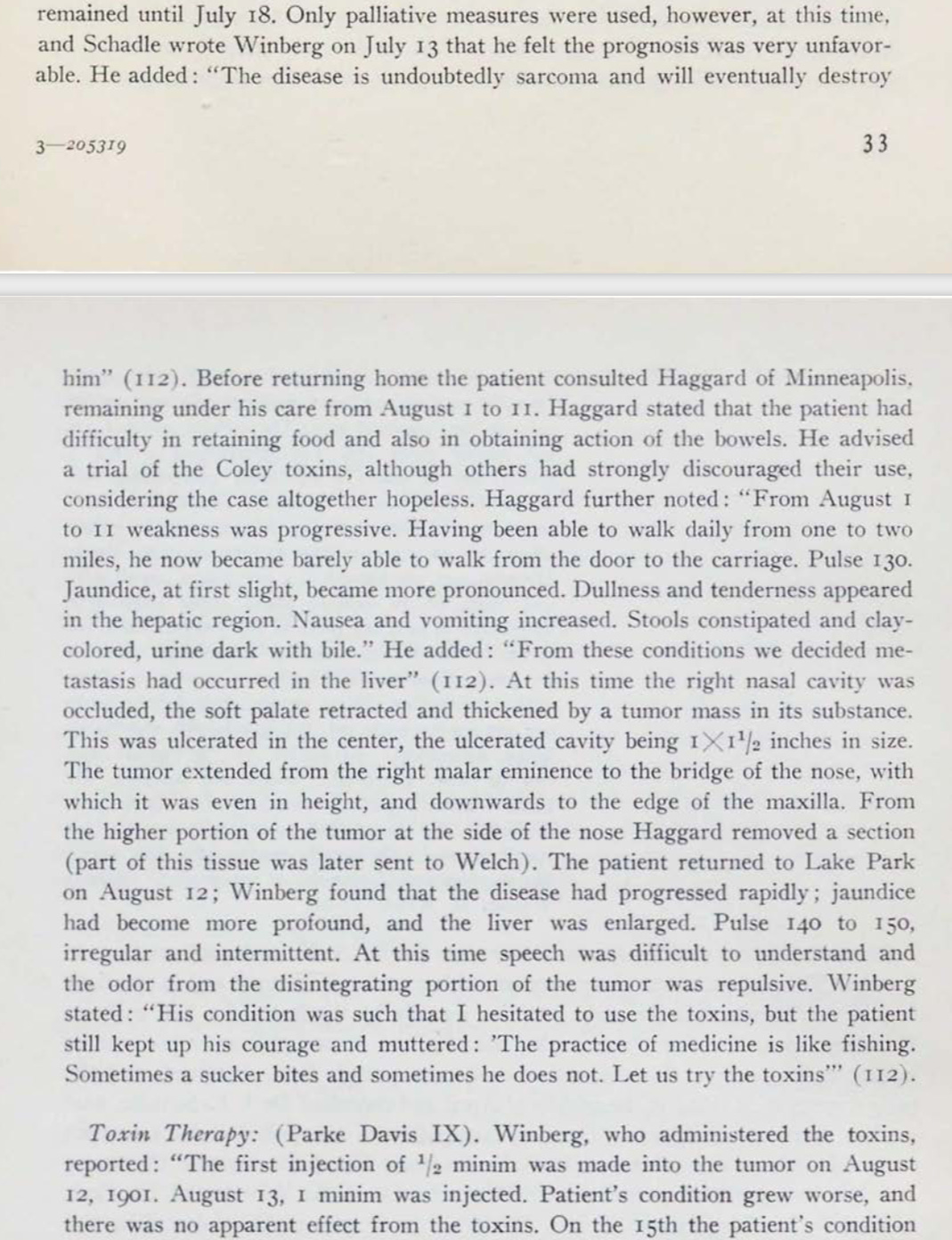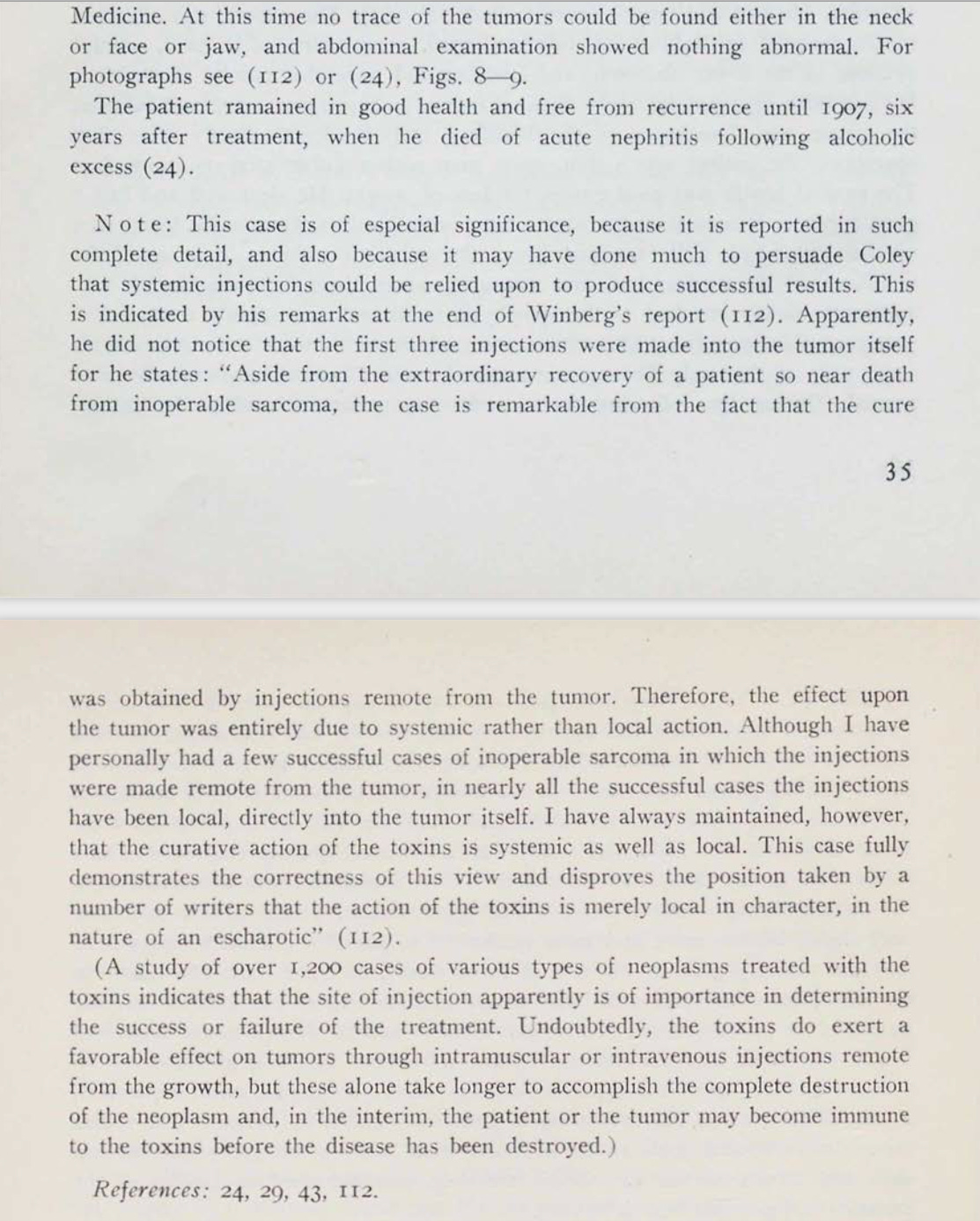Could tens of millions of lives have been saved prior to 2020?
Before covid there was cancer
Introduction
In 2014, a third of Americans believed that the government was suppressing natural cures for disease. I’d be willing to wager after the last three years that this proportion is now higher. At least, I hope so.
For some perspective, slightly more than 600,000 people died of cancer in 2020 in the US. Cancer is now the second leading cause of death in the US. Despite these grim statistics, some have pointed out that the cancer death rate has actually dropped continually in the last few decades since the 90s. While that is correct, this is mostly due to early detection, not better treatments.
When viewed over the long haul, the cancer death toll in the US alone is staggering. Since 1950, probably over 30 million people, as a conservative estimate, have died of cancer.
What if even 20% of those tens of millions could have had much longer lives, with many years, if not decades, added to their lives?
“These are the questions
Stacked like wood
These are the answers
Here is potential
Gone for good.”
Continuing the Discussion: Efficacy of Coley’s Toxins
This is an enormous subject because there are multiple treatments for cancer that have been suppressed by governments and the US government in particular. I won’t even wade into the lifestyle and prevention angle, which is certainly a worthy topic all on its own.
I intend to focus on only one treatment here on this newsletter: Coley’s toxins. If you have no idea what those are, here was my first installment on this topic.
This will include education about the following:
Molecular, Cellular, and Immunological Mechanisms of Action
History of Use, Politics, and Legality in the USA and Abroad
Comparison of Modern Treatments to Coley’s Toxins in Efficacy and Side Effects
Manuals for Manufacture of Coley’s Toxins
Some people are triggered by the word “toxins” or “vaccine.” There was limited vocabulary in Coley’s day and the terminology has stuck around. The “toxins” are now understood to be a variety of molecules on pathogens that bind to various receptors on the surface of leukocytes. These “toxins” include CpG sequences in bacterial DNA, streptokinase, lipopolysaccharide, flagellin, and so on and are also be referred to now as “PAMPs” or “pathogen-associated molecular patterns.” Some of the molecules probably haven’t been identified yet, but there’s nothing mystical about these “toxins.”
Likewise, his “vaccine” of these “toxins” consisted of: heat-killed Streptococcus pyogenes, heat-killed Serratia marcescens, liquid growth medium in which the bacteria grew, glycerol, and thymol (the latter two as bacteriostatic preservatives to keep the mixture sterile).
That’s it. Coley’s toxins is not and never has been a highly engineered product. Various people have tried to patent their special formulation and have been unsuccessful. I have personally never been interested in this. I think the Big pHarma monopolistic model doesn’t fit well with CT for a variety of reasons, and I’m glad for that. I hope that eventually CT production can be decentralized and popularized, much like medical marijuana. A couple of formulations of CT are in the public domain and I will write about them and discuss their pros/cons.
I want to start with efficacy. It’s important to demonstrate just how badly the wool has been pulled over the eyes of the public, how a population can quickly forget information that was once common knowledge as its fades or is pushed into obscurity, and how negligence, fraud, and deceit have arguably resulted in the needless deaths of millions of people in the US alone.
It’s important to document this, because the abuses of the covid pandemic are just the latest chapters of abuse of the public by the medical profession which has been ongoing for well over a century. Iatrogenic deaths can be unintentional, of course (many drug interactions from drugs prescribed by a half dozen different physicians conceivably fall in this category), but also include negligence, obfuscation of the truth, and/or deliberate harm. Obviously, the harm can come in the form of forcing unwanted or harmful treatment, or denying potentially useful treatment.
But summarizing the literature is a daunting task given that William B. Coley’s daughter, Helen Coley Nauts, wrote roughly 2500 pages spanning 18 monographs, with an additional 19th monograph written by other physicians who consulted her for guidance. This was astonishing given that she had no formal or scientific training.
In these pages she discusses the details of roughly 1000 cases cured by Coley’s toxins, as well as another 450 cases cured by natural bacterial infections.
In the 1960s, Coley’s toxins were placed on the American Cancer Society’s “quack list” (Unproven Methods of Cancer Management) for decades, being quietly removed in the 1980s after the damage had already been done.
Echoing the arrogance of those physicians who for decades militantly opposed Semmelweis’ admonishment to wash their hands — possibly because they were simply insulted that midwives were doing a better job at not killing pregnant women and babies — William B. Coley has been belatedly dubbed the “Father of Immunotherapy” by the medical profession. Like his truth-telling predecessor, he died marginalized and impoverished.
At least there’s that belated acknowledgement of being the Father of Immunotherapy. A century later, it’s now understood that numerous cytokines produced by the body in response to Coley’s toxins can be isolated, purified, patented, and sold for exorbitant sums as cancer immunotherapies — often while causing terrific side effects when unnaturally administered in singularity in such high doses.
And what of his “toxins” — which are admitted in this article by researchers at MD Anderson to produce higher cure rates than modern cancer treatments?
The Cancer Research Institute — founded by Helen Coley Nauts to advance the cause of Coley’s toxins and sitting on an endowment of 50 million dollars (!) — tells us roughly 60 odd years after its founding a likely story of why the toxins are generally no longer in use.
Never mind. At least they decided to put Nauts’ monographs on their website in 2001, which in sections, directly contradict their more recently published “just so” story in 2015.
Excerpts from Nauts’ first monograph
Special emphasis in bold is mine. Eventually, I’ll attempt to condense and summarize these monographs.
Helen Coley Nauts, George A . Fowler, M.D., and Frances H. Bogatko, M.D., F.A.C.S.
A REVIEW OF THE INFLUENCE OF BACTERIAL INFECTION AND OF BACTERIAL PRODUCTS (COLBY'S TOXINS) ON MALIGNANT TUMORS IN MAN
ACTA MEDICA SCANDINAVICA VOL. 145, SUPPL. 276
“The treatment of cancer by injections of bacterial products is based on the fact that for over two hundred years neoplasms have been observed to regress following acute infections, principally streptococcal. If these cases were not too far-advanced and the infections were of sufficient severity or duration, the tumors completely disappeared and the patient remained free from recurrence. If the infections were mild, or of brief duration, and the neoplasms were extensive or of histological types which were less sensitive to infections or their toxins, only partial or temporary regressions occurred.”
"Of all the many investigators who studied this phenomenon, the late William B. Coley, M. D. is the only one who devoted a lifetime to the subject. His search for a systemic treatment of cancer began in the first year of his practice (1891) when he lost his first case (a bone sarcoma) in spite of early, radical and repeated surgery. This led him to study all the cases of sarcoma treated in the New York Hospital during the preceding 15 years.” Page 5
‘The first "Coley Mixed Toxins" were sterilized by filtration, and the first case treated by this preparation was a bedridden young man with an inoperable sarcoma of the abdominal wall and pelvis, involving the bladder. (See Case I for complete history. ) The extensive growth disappeared and the patient remained free from recurrence until his sudden death in a subway station from heart disease, 26 years later (II).” Pages 5-6
“During the past 14 years we have been making a critical analysis of toxin therapy. The approach has been much more fundamental than merely to study the historical background of Coley's Toxins. The goal has been to gather available data on the effects of acute infections or their metabolites, and various forms of inflammation on malignant disease. This include the beneficial effects of one intercurrent disease upon another; the effects of pyogenic, non-pyogenic or non- pathogenic bacteria or their toxins or enzymes; the effects of viruses; the effects of various inflammatory or antibiotic substances; the effects of physiotherapeutic or chemotherapeutic agents of non-bacterial origin; and all known cases in which so-called "spontaneous regressions" occurred.
Many of the questions relating to this study have received little consideration. For example, why is it that the incidence of cancer has increased much more rapidly since the advent of modern asepsis and public health than ever before? This increase remains apparent even if figures are corrected for improved methods of diagnosis and for age distribution. Some believe this is because these technics (techniques) have sharply reduced the incidence of surgical infections and infectious diseases. Shear, of the National Cancer institute, seems to agree with us, for in 1950 he observed that 75 per cent of the spontaneous remission in untreated leukemia in the Children's Hospital in Boston occurred following an episode of acute disease. He asks: "Are pathogenic and non-pathogenic organisms one of Nature’s controls of microscopic foci of malignant disease, and, in making progress in the control of infectious diseases, are we removing one of Nature' controls of cancer?" (94, p. 390). Jacobsen (1934) cited data which he claimed represented the uniform observations of experienced clinicians with reference to the low incidence of malignant disease in patients who had been victim of a common infectious process, i.e. in the actively tuberculous or osteomyelitic, and in patients with acute infectious disease in general, particularly those giving a history of typhoid, paratyphoid, scarlatina or diphtheria.” Page 6
“It is unfortunate that most physicians who gave Coley’s method some thought, considered it as useful only in inoperable or desperate cases. Hence the number of operable cases who received toxins is small, probably not much over 400 patients. These cases were given injections before or after surgical removal, usually after, “as a prophylactic against recurrence''. Because the tumor had usually been removed in such cases most physicians (including Coley himself) did not appreciate how important technic (technique) could be in administering toxins in the operable case. If injections were given for at least four to six months, surgeons here and in Europe achieved 80 per cent five-year survival - a considerably higher rate than that following surgery alone or combined with radiation (41). Pages 10-11.
The present monograph is a critical analysis of the method Coley developed with end-result studies of 30 inoperable cases treated by Coley’s toxins. These case indicate how the toxins worked on a variety of neoplasms, and includes cases showing the dangers of inadequate treatment. (Case 22 and 27.) This group was selected from over 270 in which a complete regression was obtained, as being representative of what could be accomplished by toxin therapy in inoperable malignant disease.” Pages 10-11.
“Because the late Dr William B. Coley was put in charge of the Bone Tumor Service at Memorial Hospital, his practice after 1918 was largely devoted to bone cases, and therefore almost all his published paper in the last 15 years of his life deal with neoplasms of bone (34, 35, 36, 38, 43). Unfortunately, this gave the medical profession the erroneous impression that Coley's toxins were effective only in bone sarcoma.” Page 12
“While such work is being undertaken and improvement in the products and the technic (technique) of administration are being effected, it is important to evaluate the excellent results which were achieved in the past when toxin therapy was properly administered. We believe that Coley's method has not been more widely used because the existing strong evidence was scattered and had never been presented in such a manner as to allow toxin therapy to compete with it more popular competitors, the x-ray machine, radium or some of the recently discovered chemotherapeutic agents.” Page 13
One life saved
Below is ONE case from this monograph captured as screenshots from Helen’s first monograph. This particular case strikes me and weighs heavy on my heart, as I was personally unable to help a desperate patient in 2019 suffering a nearly identical cancer.
As you read this extraordinary account of ONE life saved, I’d like you to extrapolate to the tragically lost potential, not to mention the unspeakable suffering, of millions of people dying of terminal cancer in the United States alone over the past century — a travesty that continues to this day.
Why? How? That’s a topic for future posts, and cannot be blamed purely on nefarious motives. But here’s a glimpse about how those did indeed play a role, well before the concept of clinical trials, drug regulation, lobbying, or regulatory capture — all rightly singled out as part of our massive iatrogenocide problem in 2023.
You see, Coley’s contemporary Dr. James Ewing, also at Memorial Hospital (now known as Sloan-Kettering) was concurrently developing radiation therapy. One of Dr. Ewing's benefactors was James Douglas of the mining company Phelps-Dodge Corporation. Douglas’ daughter died of breast cancer under Ewing's care and treatment using radium, but he remained enthusiastic about it nonetheless. This particular industrialist went on to make hundreds of thousands of dollars in donations to Sloan-Kettering… on condition that Ewing be made medical director. Douglas remained so enthusiastic about radium that he drank radium water most of his life and applied radium ointments to his skin. (He later died of pernicious anemia.)
As for Ewing, he went on to publish "The Treatment of Cancer on Biological Principles." In Ewing’s written work, what did he have to say about his contemporary, and now his underling, Coley?
Stephen Hall, in A Commotion in the Blood, writes, "What makes this paper particularly revealing, however, is its great sin of omission: Ewing managed neither to mention nor to cite a single instance of Coley's work, which by that time claimed close to 200 durable cures in inoperable and supposedly hopeless cancer cases... Given that they worked at the same institution and debated these same issues, it is difficult to attribute this to oversight or space limitations. It seems at best mischievously ungenerous. But it is a time-honored practice in science to emarginate an unpopular thesis simply by not citing it."
Ernst Janning: “Those people. Those millions of people. I never knew it would come to that. You must believe it. You must believe it.”
Judge: “Herr Janning. It came to that the first time you sentenced a man to death you knew to be innocent.”
Comments to this post are open. Comments must be polite and should ideally stick to the subject matter at hand. Violate this policy at your own risk.










Had father and brother die of cancers. I didn't know about any treatments other than usual surgery, chemo, radiation until I learned history of allopathic medicine and Rockefeller et. al. It grieves me that all these unpatented treatments always get stopped.
What's more interesting about this is that the effects of childhood vaccines in potentially stopping a more robust immune response could hurt, not help people in the long run even if you assume that the vaccine works as intended. Measles strikes me as a prime example of this. My grandparents were all born in the 1910's or early 1920's when the vaccines they received were few to none. My grandmothers both lived to 94 my grandfathers both died of heart attacks, one at 84 and one at 93. Could infections serve as a healing mechanism for cancer? There's so many things about healing responses which we do not understand...